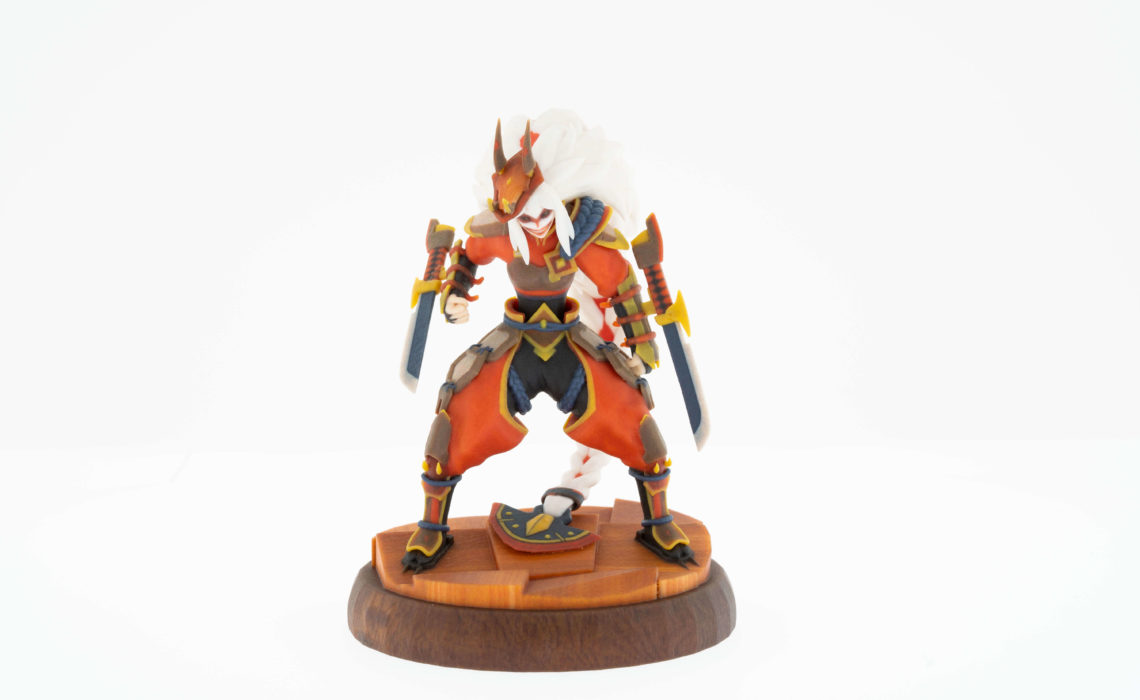
The demand for 3D printed figurines at Shapeways is tremendous, from action figures to pieces made for dollhouses. Miniatures and models are extremely popular too, from vintage cars to train models and accessories, as well as photo-realistic tabletop gaming characters. While there are thousands of products to choose from at the Shapeways Marketplace, many customers also design and customize their own figurines, providing imagination and energy unique to individual projects, hobbies, and gaming interests.
Bring Colorful Characters to Life in 3D Print
Designing figurines for 3D printing can be as simple–or as complex–as you want them to be. It can be nearly impossible to find pre-made models conveying your vision. With access to so many 3D modeling programs and ease in uploading designs to Shapeways, the best solution is often to make your own products–unlocking new worlds of your own creation with customized models.
Many tabletop gaming enthusiasts also prefer to design and 3D print figurines to imagine the game and the adventure more vividly. You may even want to create multiples of one figure with different expressions, accentuated with different pieces like a sword or a staff, or unique touches like a scroll or a musical instrument. It is also feasible to create nearly anything else like bases to perch the models on, landscape areas, and even entire board games with pieces.
Tips for 3D Printing Figurines and Miniatures
Following are recommendations for creating your own 3D figurine or miniatures:
- Learn about 3D printing materials and technology, and choose wisely. While it can easily be an afterthought, deciding on materials and technology ahead of time, as well as learning as much as possible about them, can save a lot of time and potential headaches. This is especially true for more complex models. Research materials to match your model with project requirements whether using Fine Detail Plastic or casting parts in metal and adding other touches like intricate engravings.
- Optimize your 3D figurine for success. Efficiency is critical to the modeling process, and to optimizing any product for successful 3D printing. Once uploaded to Shapeways, each 3D model is automatically checked for common areas of vulnerability like thickness or strength issues, however, designs should be perfected as much as possible before analysis to streamline the production process.
- Adhere to specific design guidelines. Shapeways clearly outlines design guidelines for each material. As an example, for Nylon 12 [Versatile Plastic], see bounding box minimum and maximum dimensions, along with information on design guidelines for:
- Engraving and embossing details
- Escape holes
- Sprues
- Wall thickness
- Wires
Issues with wall thickness are common, usually as a result of areas of the design that are thin and could break during manufacturing. Problems with wall thickness can be solved with automated slicing programs, but in many cases designers may choose customized settings after uploading. Each model should have walls and wires that are strong enough for 3D printing as well as any post-processing required.
To achieve success, designers must also plan for different features like flexibility or hardness, as well as desired textures–whether matte with a slightly rough surface, or more polished.
- Design for proper size and weight of your model. 3D printable shapes should be able to support their own weight, and preliminary considerations are imperative to success. If not suitably scaled, 3D prints may turn out too small or worse, they could completely fail if they are too heavy to stand upright. Refer to bounding box information in the Shapeways design guidelines for each material, as well as setting the proper orientation.
- Prepare to upload a 3D file that is compatible. Nothing is more frustrating than compatibility issues! Fortunately, Shapeways accepts a range of file types, including:
- File types: DAE, OBJ, STL, X3D, X3DB, X3DV, WRL, 3MF, STP, STEP
- Full-color printing: OBJ, MTL, DAE, WRL, X3D, X3DB, X3DV
- Maximum file size for all types: 64 MB and/or 1 million Polygons
Popular Materials and Technology for 3D Printed Figurines
There are so many different ways to design, 3D print, and finish 3D models. For figurines and products like tabletop gaming characters, choose materials and technology depending on how you want models to look in terms of finish, color, and material properties like strength, flexibility and more.
- Fine Detail Plastic – Popular with hobbyists, this acrylic material is highly suited to scale models, miniatures, and decorative products. Shapeways customers rely on Fine Detail Plastic 3D printed with Material Jetting for products with high detail and smooth surface texture.
- Full Color Nylon 12 – Featuring excellent mechanical properties with the option for a smooth finish, this 3D printing material offers vibrant color for models, including those with complex geometries or thin features. Full Color Nylon 12 is 3D printed via Multi Jet Fusion technology.
- High Definition Full Color – Offering access to over ten million colors, High Definition Full Color is 3D printed with Material Jetting technology. This process provides speed and precision, along with a variety of hues, textures, exceptional surface finishes, and fine detail.
- Nylon 12 [Versatile Plastic] – Advanced materials like Nylon 12 [Versatile Plastic] 3D printed with Selective Laser Sintering are also extremely popular for miniatures. There are numerous options for colors and finishes, 3D printing pieces that are strong and durable, but also flexible when required.
About Shapeways
Enjoy the benefits of this advanced technology and a wide range of materials from Shapeways for 3D printing your creations with accuracy, complex detail, and no minimum or limits in terms of mass customization or single part orders. Shapeways has worked with over 1 million customers in 160 countries to 3D print over 21 million parts! Read about case studies, find out more about Shapeways additive manufacturing solutions, and get instant quotes here.

